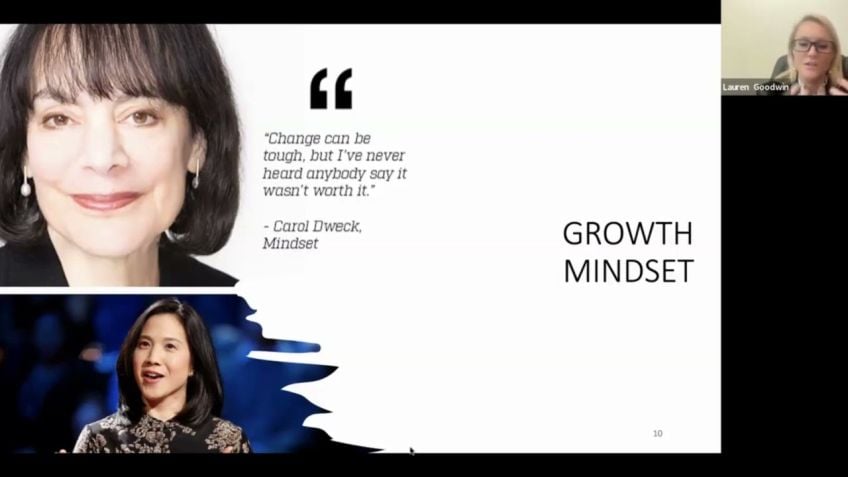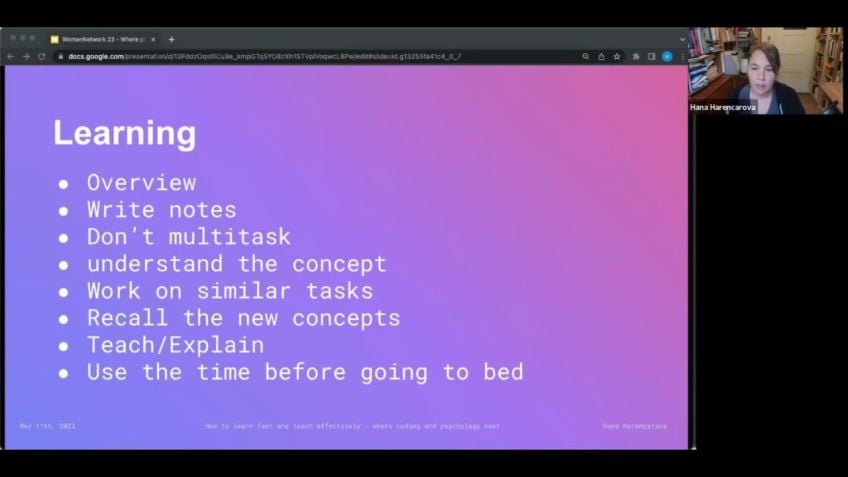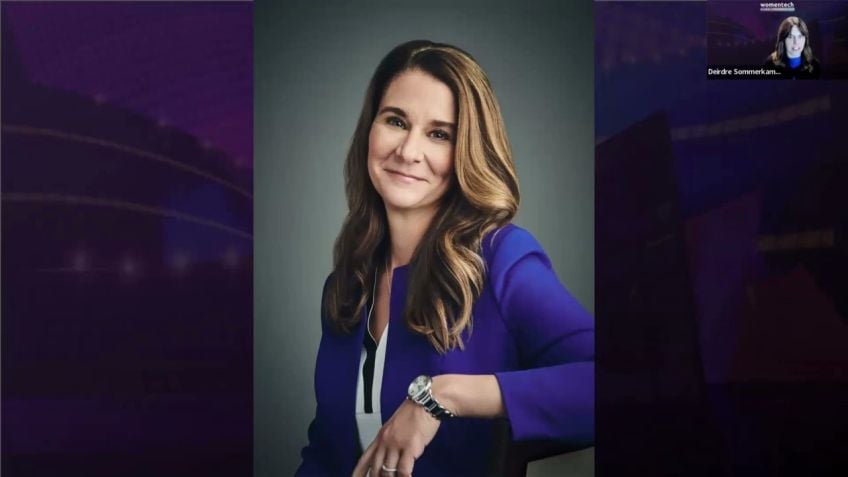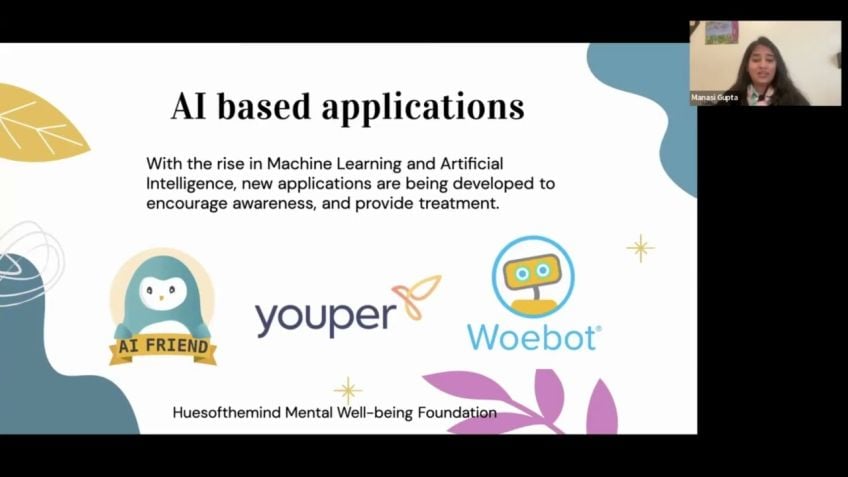Cultivating a Culture of Love, Liberation and Belonging
Cultivating A Culture of Love, Liberation, and Belonging
In today’s world, understanding and promoting a culture of love, liberation and belonging is critically important. Whether in our schools, workplaces or common spaces we visit, cultivating this culture can enhance productivity and overall satisfaction with life. However, do we really understand why the love of liberation and belonging matters so much in our day-to-day lives, and do we know how to foster such a culture?
The Importance of Cultural Differences
The complex tapestry of human diversity, which includes different localities, countries, religions, and more, plays a critical role in creating fertile grounds for a productive cultural environment. However, striking a balance between these differences is equally crucial. As an educator and a digital coach, I can testify that understanding these differences, and leveraging them, can make a significant difference.
Three Major Concepts
- Equity Consciousness: This factor emphasizes why equality and diversity matter immensely. It educates us why every human being, irrespective of their background, deserve equal rights and opportunities.
- Assessment for Good: This idea encourages us to focus on uplifting one's life by helping them reach their fullest potential.
- Dismantling Racism: Racism remains an enormous stumbling block in our society. It's important to educate ourselves and our communities about the harmful effects of racism and strive to eliminate it.
The Power of Leadership in Fostering This Culture
Leadership plays a pivotal role in establishing a culture of Love, Liberation, and Belonging. Great leaders recognize the strengths of their team members, foster an atmosphere of inclusiveness, and inspire their teams to follow suit. Besides, portraying love and belongingness in action can help create an inspiring and uplifted working environment.
Cultivating a Culture: The Broader Perspective
Creating a culture is not about imposing an individual's beliefs on a group; it's about recognizing, respecting, and leveraging the diverse interests, backgrounds, beliefs and experiences of every team member. It's about creating a high-quality interaction across cultures, irrespective of social identities and differences.
Moving from Fixed Mindset to Growth Mindset
One important aspect of creating a responsive culture is shifting from a fixed mindset to a growth mindset. In a fixed mindset, people believe their characteristics and capabilities are static and unchangeable. In contrast, a growth mindset encourages people to believe that they can constantly learn, develop, and evolve. Having a growth mindset can foster entitlement and respect and promote flexibility amongst team members, which can, in turn, contribute heavily to building a fruitful cultural environment.
Conclusion
In conclusion, creating a robust culture of love, liberation, and belonging requires effort, patience, and dedication. However, once established, such a culture can profoundly transform workplaces and classrooms, creating an inclusive, respectful, and productive atmosphere.
Connect with us for more insights and discussions – let’s create a more loving, liberating, and inclusive culture together and improve the quality of life for everyone.
Video Transcription
So let's begin with uh the topic that we are going to start with. But as uh we all are here together, it, it, it still justifies my topic that we are trying to cultivate a culture of love liberation and belonging.But here we are going to go a bit off topic, off topic in the sense, we are going to have uh look at an idea that how we are going to create or how or why the love of liberation and belonging matters a lot in our uh in our day to day life, like maybe the classroom, maybe it may be our workplace.
It may be any other places that we, where we are visiting or where we are going with. So that's something we are going to discuss here. And this is uh the topic that I'm going to uh move forward with. But something a bit about me, uh that's uh currently, I'm a digi digital coach with uh various uh institutions or the organizations volunteering. And uh then I'm a uh IGCC educator, a speaker at various events as, as we are here together. So this is how currently what my profile is and I'm working here in U A with the British curriculum school. And uh you can connect with me on my T uh Twitter and linkedin as well. Ok. So the focus of today's topic on, on the, the thing that we are going to cover up in today's topic or the session is about that, how we can create this, uh the balance between uh the cultural uh differences that we face. And as a as, as you have seen my profile that being an educator, this really matters us when we are in a classroom environment, when we are into uh in into the workplace or where we are into the culture, where there will be lots of people from different localities, different countries, different region, religion, everything.
So that, that's something I'm going to put it together. But again, we're going to cover up or we are going to connect this with the different aspects of our uh scenario or different aspects of our um workplace. Also, we are going to look into this uh three major concepts. First is about the equity consciousness that how and why the equity or equality matters, why the diversity and inclusion uh matters a lot. Then we have the assessment for the Good. Now, assessment for the Good is something where we are going to focus on uh on the aspects that how we can upskill somebody's life or how we can upskill somebody from, from the level where they are at present and where we can put them in the future. And then we are going to move towards the dismantling, dismantling the racism that we face at lots of places. And especially when the kids are working or when the kids are looking into this kind of things comes up or when we even, even at our workplace. Also, we find this, this kind of situations. So putting all together and putting all the world around together, uh we are going to cover up uh this uh topic uh together and let's see how we can uh find it out. So my objective with uh today's topic or my object is to be here with such a lovely audience and, and uh uh and, and coming from a variety of the places, we all are coming from different cultures, religion, race, caste, everything, but we all are here together for the purpose of, of uh getting connected with each, each other, getting uh to learn something from each other and upskill our own selves.
So that's something we are going to put it over here that what can be the components of the cultures that uh will help us or that will m make us aware that what we are missing and what we are covering up. So that, that gives us idea how uh overall the cultural uh cultural responsive environment can be created. We are going to understand that what is considered to be cultural uh responsiveness, responsiveness and what is not. So that's something we are going to put it together and we'll be looking into, OK, where we are today and where we want to go uh in future. So that's uh the thing that we are going to focus here, that inclusion, that's going to be focused, the diversity that also has to be considered before we uh proceed further. OK? Now, everything that starts from the leadership, So definitely the leader pay uh leadership is something the position or, or, or the thing that I can see as leadership is where we are going to have an idea that OK, something is being considered by the leader and that has been forwarded by the followers.
So that also happens even in the school environment or even the college environment that when there is 111 teacher or the other teacher is focusing and they are trying to cover up, they are trying to bring up a, a culture in the classroom, that culture is actually uh looked forward.
That culture is actually uh considered to be the major reason that we all have to be together. We all have to follow. We all have to look into the love belongingness. We have to consider the inclusiveness in the classroom rather than diversity and including the diversity, how we can create the inclusiveness in the classroom or in the workplace. So that's something time to lead. Uh We are going to focus on. OK, when we see a time to lead and actions are really important. So when the leaders of what the leaders are doing that might come up in the colleagues also and, and the same thing comes up when the teachers in the classroom, when they are uh talking about uh the di uh the belongingness automatically the, the culture that is created or the environment that has been created also leads to a uh a a situation where uh the kids also will learn from that.
Now, when we put a culture together, now it's a, it's a something that, as I mentioned previously, that culture is something where we are creating a team environment. It's not something what I believe, it's something what we all believe. And that's the reason we all are here.
So that's something we see that a cultural environment or the all the cultural responsiveness environment that we have to create, whether we are at, at our home, whether we are at outside or whether we are at our uh our workplace or anywhere in the world. And that's what has bring all of us together, that we are building a team environment together and we are bringing something new, something innovative for the others to make others learn or to learn from somebody and that brings up a good culture, a good environment among all of us.
Now, when it comes to a question that what is culture or why do we say that a culture is created, who created this culture. So that's something that I feel that OK, it's not an individual aspect. As I mentioned, what I believe it, it may not be considered to be a whole culture and whole environment, but the culture will be created or culture will come up when the whole group is there or the people around us who, who are getting into that particular environment, they are creating the culture, they are creating a diversified environment.
And that's something the different aspects of the culture comes up as you can see on the slide also that how different uh aspects will be coming up, how different particular uh things will be considered. And especially when we are in the in the organization, especially when we are working with the Corporates that gives us a more idea that have the different uh aspects are coming up when it comes to the um culturally uh responsiveness environment. Yes. OK. Uh Now it's time for you people to uh share your thoughts on the question that is there on the screen, I'll be uh in the chat. So it will give us an idea that how we all are working and, and what culture we all are working or how we are creating the cultures for the other uh quick uh points uh in the idea and your ideas on the chart. Yes, I'm getting very good responses from the people. Yes, I will be expecting from the others. Also, let's see how, how we, how we are incorporating the culture, where we go or where we are surrounded by. Yes, I'm waiting for the others responses as well. Yes, very good answers and very good responses that I have received. And then let's see that.
OK, with this question, what I was trying to bring up is this exact same points that has been mentioned in the jet box that what are the other people's interests, what are their backgrounds? What are their ex uh experiences? All these factors has to be considered and that's what Yes, absolutely. We got the responses uh that we, we need to know the other person. Then only we can create a cult uh uh culture that is of the belongingness is allowing us to be uh uh together in a team, irrespective of the field where we are or what we are doing. So that's something, it's one of the best ways to know each other when we can attempt to cultivate this culture of belongings. And that to be the high quality of interactions across the cultures, it's not only based on the social uh social identities, but also with the social differences that we can see that we can bring all of us together and create a big community, create a big culture together as a team.
So that's something uh irrespective of any of the things or irrespective of any of the factors considering we will be bringing everything together and that togetherness will create a good corporate environment or the cultural environment. So that's absolutely perfect. And thank you to the audience who participated. OK.
Now let's look at this picture and I want you people to see me uh whether this picture is really a truth or is it's just a myth. Yes, I got one response from Ana. Thank you, Ana. OK. So we have difference of opinion here that some people think it's true. Some will think it's not. So may I uh have somebody from the uh um audience to volunteer and say, why? What's their perspective or what's their aspect? Yes. May I have some volunteer? OK. Yes, Mona has mentioned. It's not about complaining, it's about creating a safe place. Uh That's what we do in our corporate world also or in our uh workplace also. Yes, with, with no names when something is mentioned that can create a good environment because that's not about hurting others. And that's not about uh creating a disturbance in the existing uh environment. Great and with the suggestions with the complaints or whether it's a feedback, whatever we say, the other person will get an opportunity to improve and to create a good uh perspective in the future. So that's something really great from you all. Thank you so much. Now, when I, when I, when I was thinking about this topic, I could reconnect or I could connect to this topic with the two fundamental things that how we can put it or three fundamental components that what can be the things that I should include in my, in in the concept of culture.
So there came up three aspects, the explicit culture that we see or we can say the visible culture or not culture, actually the visible components that we find out the careful observations and the underlying values. These are the three basic fundamentals or the components of the cultures that we find. Looking at these three points. If you, if you go through the sub points, given there looking at these three points, we come up with the point that OK, there is something that we are missing out or there is something that we are looking into the other person. And if we are, if we find it expected, then OK, we create that OK, this is the person who belongs to our culture and this is the person who don't belong to our culture. So there is something the diversity comes up or there is something the differences comes up, underlying values is something that I'm going to put it together here again, with the core values that the person has. It's not about their attitude, it's not about their uh uh optimistic nature.
It's all overall half the person is having the underlying values of the core values through which he is creating the culture. If the person is very negative by his or her thoughts that's not going to give a good culture or work environment. And uh that's what something will relate it over here. OK. Now I have a uh a link over here. I'm going to post in the uh chat. Let's uh see. OK, I have posted one link over here and there you will find one question given there. So before we proceed further, that how we can create this culture and why does the culture matters? We'll have a look at this certain points that are uh being shared here. I hope everybody is a able to open the link. Yes, I got, I started to get the responses. Perfect. Yes, I'm expecting uh more answers. If you can add it, that would be great. Yes, absolutely. Perfect. So I have got the points and uh the points itself has a very clear picture that what does it mean with that? I don't know whether I'll be able to post this or not. Yes. So the biggest point that has came over here or, or that can be highlighted over here is inclusiveness that we, of course uh expect when it comes to the people, when it comes to the uh team environment or the work environment.
So even in the classroom also, we include or we have to put together the inclusiveness or we can say um we need to get in uh the support of each other. We need to think about the safety of each other, the cooper operation or the attachment or the comfort or the feeling? Absolutely. So these are the few things that we look into when we talk about the belongings. Now, let's look into the point. What exactly the belongingness?
Is, is it a need or is it a want that something comes up when we, when we try to create the connections, is it our need or is it something that we want? Right? It's our need because without, without the people, without the social connections, we cannot survive in this world. And that's what comes up with the point of love and belongingness. And that's what I'm going to focus over here with the theory. I I think most of you are aware about this Marshals theory of hi, I mean, a hierarchy of needs that what exactly uh the love belonging, belongingness, esteem needs, self needs, self actualization, needs or safety needs or psychological needs. Everything has been covered in his theory and this shows that this is not the need. I mean, this is not the one that we are expecting, this is a need that the people has to have. OK. Uh There's one statement given over here and a picture along with that. Now, I want you to put it in the chart. What does it comes in your mind? Looking at the topic that we have uh gone through till now? What does it comes up in your mind? Now? I want you to put it in the chat so others can also read the answers. Yes, I'm waiting for the response from everyone. Ok.
The question is, uh, there is a quote given on the screen and there is a picture given besides that, you need to connect it with the topic and you have to sh share your thoughts, what you understand with this or what you think, looking at this picture and the quote, absolutely.
We all believe in equality. We, I mean, equity, we all believe in uh accommodating every person, even if they are from the different uh places, even if they are from the different, however different they are. So that's something we are going to put. Yes, equality. It cannot be possible in the existing environment because if we try to pull others, definitely one day or the other, we will be also pulled. Yes, they should accommodate every day. I mean, everybody on everyday basis and that's something what we are going to uh as mentioned over here that equality will just give the same resources but equity will give uh each student or each person even in the corporate world what they need to learn and what they need to thrive for.
Uh Yes. So looking at this, let's come to the goals. But why this topic has been covered and why we need to have uh uh equality and equity or whether we should have only equal e equity. So that we can achieve these goals. First, we, we need to establish the inclusion environment or inclusion environment so that it creates a good atmosphere and it makes everybody respected, everybody connected with one another, whether it's in the classroom, whether it's outside the classroom, whether it's in our personal or the professional groups.
Anyway, then we need to create or develop an attitude of having this uh environment together and we need to create a personal relevance and the choices. It's not about that. OK? If other person doesn't like it, it means I will also not like it or if I like it, others should also like it. That's not something where we are looking for, then we have the enhancing uh meaning of the environment that we are creating each person or each student or each uh uh professional to whom we are meeting, they have the different perspectives, they have different values. And that's what something we are putting together, entering the competences where we are putting all of them together. No bias, no uh prejudice has to be there. And that's something the goal of uh of cultivating or culturally responsive environment is all about. Mm OK. I have put this slide just to create uh uh overall idea about why the inclusiveness work or inclusive workforce is needed or why the what is the importance of having the inclusive workforce and looking at this factor, we can know why uh what kind of culture or what kind of environment can be created.
As you can see, there are different factors, there are different uh aspects that has been covered over here in, in, in the corporate world in the same way. This is just another example that I've put it here that how we can create or have the general strategies that can be framed or formatted so that it can promote the belongingness and the love among the uh students also in the classroom or even in the professional groups. So these are the certain areas where we will be where uh every teacher or every person who is in the group or who is the leader of the group they have to take care of about. Now, we have to apply this cultural behavior. We have to put all these concepts together and we have to apply this. Now why we need to apply this. It's not about making everyone to feel good. It's, it's not about making everyone to make us safe, but it's all about bringing come together and get the best outcomes out of the group that we are in. And at the end, there should be certain, certain aspect that comes up or the perspective that comes up that has a, a great exposure and a great relevance with that. OK, I'm skipping this slide but I'm uh we might come back on this.
But now one question is for you all that. Is it time for a personal growth mindset. Do we need to convert ourselves from the fixed mindset to a growth mindset? Uh Please share your points in the chat. OK. I'm getting good responses from the audience as well. Great Ana Sei, yes, see we are living in the, in the world or we are living in the era where the fixed mindset cannot exist at all or we cannot exist with the fixed mindset. So there has to be a concept of growth mindset. Now, when we look into the growth mindset and especially in the classroom environment or especially in the education field, then there is this other certain questions that comes up or these are the questions that we need to ask ourselves or ask the leaders that are we creating those culturally responsive environment even in the class?
Are we creating the mental and the um mental well being of the students or not? So these are the things that we have to consider before we start to planning uh plan to create a proper or the existing or to improve the existing environment and the a book, please. Growth mindset and, and the fixed mindset, they have their own uh pros and coins and that's something that we have to put it in together, that we have to move from the fixed mindset to the growth mindset. Then only this can this era in, in this era we all can survive. OK. Now, uh there are certain elements that we really feel so that we want to keep with ourselves. There are certain, we want to remove and there are certain elements which we, we need to add. Now, why this question is given over here is just to understand that why the while creating the environment or while creating a culturally responsive environment, what are the things that we really should keep it with ourselves that will help us to build those kind of environment?
What are the things that we can remove? Because we want to divert ourselves or we want to grow ourselves from the fixed mindset to the uh to the growth mindset. So, so as you can see on the, on this line that these are certain things that comes up uh that we can put it to create a culturally responsive environment to create the wealth, mental wealth. I mean, mental well being of the people. And this will help us to grow from the fixed mindset to the uh growth mindset. So these are the fundamental things that we can put it together to understand that how and why this kind of culture is needed. Because when everybody is together, when everybody is creating a good uh things together, then only the good team or group, good group can be created. OK. Uh There was 11 point given there that dismantling the racism uh to support the authenticate uh social life of the people.
So these are the thing a few points that I have collected. I'm not uh sure that how much it can relate to our own workplace where we are working or even in among the students where we are teaching or where we are trying to make them learn. But there are many of the points which exactly relates to us that we need to remove from our life or that we need to add in our life so that we can create a good uh weather and, and create a good culture among ourselves and among the others where we are. OK. And uh this is something that I was talking about that there can be certain uh plans that can be created or there can be certain steps then that can be created where we can ask everyone to create a good cultural or environment or good uh workplace where we all can work together.
So there are certain points that I have put it together. It's just for an informative purpose or it's just the points that we can create, take it as a plan that we are making for uh creating a good environment. Uh I think uh yes, this is a statistics that I have taken for uh just for the example purpose that what is needed. I mean, where exactly we are and where the diversity is being seen where the inclusion is missing. So these are the points where we can put it together to, to see that have a that have the points of uh love and care and belongings. If I want to edit over here is creating the concerns and the hopes among the people have genuinely, these people are being acknowledged. Are, are these people being included in the groups or they are just being excluded because exclusion always uh uh hurts. So that's something we should not uh be putting into where we are going or where we are working. Uh Yes, with this. I would just like to uh wind up the thing. Uh If any questions, any concerns or any, any uh points that you would like to share, anybody would like to volunteer, then it's open for them. Now we can have that. Yes. Anybody from uh the audience would like to volunteer. OK.
By the time I can protect so that many of you uh who are not yet connected with me can get in touch with me on my Twitter and on my uh linkedin. Perfect. So I think we can wind up the session. Thank you so much, everyone for joining and it was a pleasure to be here with all of you. Thank you, everyone. See you. Thank you.





